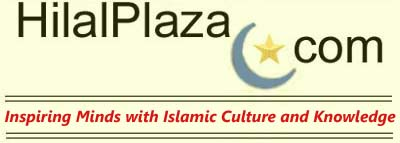Islamic Art
Islamic Art plays a vital role in the way of life called Islam. Islam, extending from the Africa to Asia creates a unique scope of artistic concepts.
This diversity, however, is contained within a somewhat, restricted framework of techniques. Here I use the term ‘restricted’ very loosely, as each individual technique can be applied in such a way as to achieve an almost infinite number of transformations, for any given art form. I will be discussing this in more detail during the course of this essay.
Before moving on to discuss the huge variety we find in Islamic Art and the factors which unite this huge concept, I think it is important to clarify what this concept of ‘Islamic Art’ is.
The term Islamic generally refers to purely religious expressions, such as calligraphy.
Is it art created by Muslims? Or alternatively, is it art created by people residing in countries where the dominant religion is Islam? Or should it be confined to the literal meaning of the word ‘Islamic’? The word ‘Islamic’ means, ‘of Islam’. It is an expression used to describe the object in question, as being something which complies with the beliefs and values of the religion, Islam. I will be using the latter description, to describe the term ‘Islamic Art’. As a result, all figural works of art will not be included in this study. The reason for this being evident in the following saying of the Prophet Muhammad in which he condemned artists who try to
‘ape’ the creation of God: in their afterlife they will be ordered to give life to their works and will suffer from their incapacity to do so.
Muslim artists transformed everyday objects into artistic masterpieces.
See nice Islamic art patterns on Eid cards and posters here.
Islamic Art is therefore, inexhaustibly diverse, with an almost infinite number of art forms.
See nice Abaya patterns and fashions here
Variety is plentiful as it is, but if we break down each art form and analyze the multiplicity we find within the realms of that particular artistic expression, we find the world of Islamic Art expanding even further. As I mentioned earlier, certain restrictions are present, creating a framework within which Islamic Art is applied. The elements used to achieve this include, arabesque, calligraphy and geometry. This may seem like a limited number of styles to work with, reducing the diversity which can be achieved, however, this restriction, far from impoverishing the expression of Islamic artists, resulted in the raising of abstract design into an art form, not only of enormous wealth.
Looking at the fascinating field of calligraphy, we find that many different scripts have evolved in various regions of the Muslim world, over a vast expanse of time. These scripts range from Kufic, Naskhi, Thuluth and Diwani. It is clear from this that this particular element of Islamic Art is almost inexhaustible, given the various types of Arabic script and the extension of the Islamic culture.
Geometrically, each pattern being generated by a unique and complex system of numbers. The unique nature of the patterns produced implies the plurality present. No two patterns are the same, therefore, gaining a diverse attribute. One can delve deeper into the spirituality connected with Islamic Art by allowing oneself to contemplate a geometric pattern and allow the gaze to become soft and not attempt to fix it, the patterns endlessly mutate into different geometrical arrangements.
The vastness we begin to encounter within Islamic Art becomes quite unimaginable, extending as far as one allows it to extend. One geometric Expression, such as the ceiling of the Comates Hall in Alhambra, is quite different to another, such as the detail found on the minbar in the Arslanbane Mosque in Ankara.
See Islamic art patterns on hijabs and Muslim Scarves here
Haven explored the extent to which this diversity reaches, it is important to try and understand the reasons behind this occurrence.
Both contributing factors are mentioned here; space and time. The various styles evolved over long periods of time, with each generation adding to the diversity in the environment. With the Islamic civilization gradually expanding to cover a large area of land, enveloping many cultures, a series of local styles were added to Islamic Art.
The article was produced by the member of masterpapers.com. Sharon White is a senior writer and writers consultant at term papers. Get some useful tips for thesis and buy term papers .
Article Source: http://EzineArticles.com/?expert=Sharon_White (By Sharon White)
Other Sources
Modest and Artistic Clothing for Women
Muslimah fashions Site
Islamic Calligraphy and Art Articles and Showcases
The "Art" of Islamic Art - By Salma Arastu
Islamic Calligraphy - The works of Ricardo Panizza
